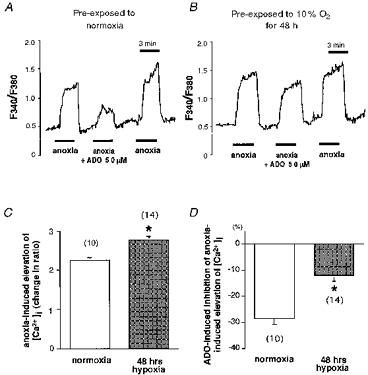Figure 2. Effect of chronic hypoxia on adenosine-mediated modulation of anoxia-induced increase of intracellular free Ca2+ in PC12 cells.

A, a representative measurement of cytosolic free Ca2+ concentration ([Ca2+]i) in response to anoxia in a cell which had been exposed to normoxia for 48 h. [Ca2+]i was estimated by using the fluorescent Ca2+ indicator fura-2. The ratio of F340/F380 was used to reflect [Ca2+]i. Anoxia was induced by saturating the medium with 100 % N2 with 1 mm sodium dithionate. Anoxia induced the elevation of [Ca2+]i which returned to the baseline level upon reoxygenation. The response to anoxia was reduced in the presence of 50 μm adenosine (ADO). B, a recording of [Ca2+]i in a cell that had been exposed to 10 % O2 for 48 h prior to the experiment. Anoxia could still induce an increase in [Ca2+]i. However, the inhibitory effect of 50 μm adenosine (ADO) on the anoxia-induced increase in [Ca2+]i was dramatically reduced. C and D, the overall data from Ca2+ imaging studies. The numbers in parentheses indicate the number of cells examined. The anoxia-induced increase in [Ca2+]i, evaluated as the relative change in the F340/F380 ratio, was significantly augmented when the cells had been pre-exposed to 10 % O2 for 48 h (C, *P < 0.05). On the other hand, the inhibitory effect of adenosine (ADO) on the anoxia-induced elevation of [Ca2+]i was significantly smaller in the cells exposed to hypoxia for 48 h (D, *P < 0.05). Means + s.e.m. are shown.
